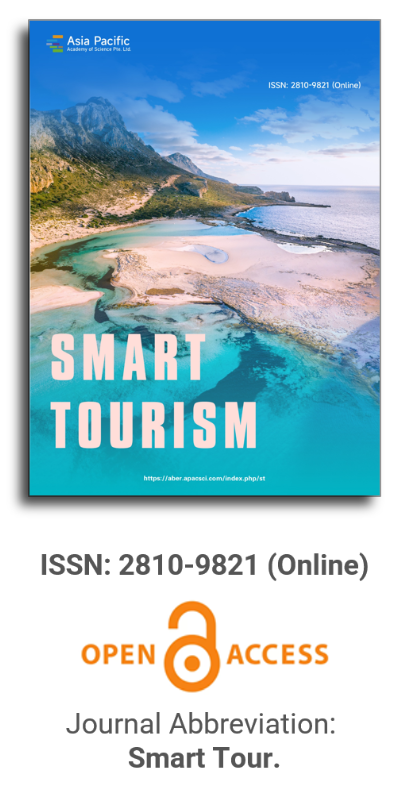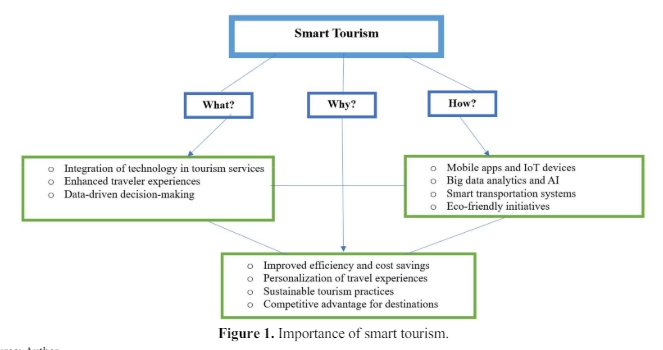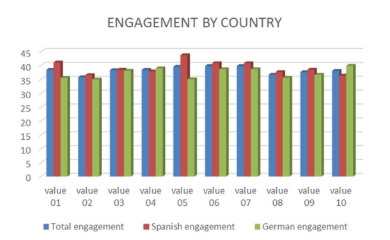


Integgration of the Structural Equation Model Partial Least Square (SEM-PLS) and ANFIS neuro-fuzzy approach for creating a local wisdom-based tourism development model, case study of the Prabu Siliwangi tourist attraction, West Java, Indonesia
Vol 4, Issue 2, 2023
Download PDF
Abstract
Tourism has become one of the most important economic sectors in Indonesia. Indonesia, with its natural wealth, culture, and historical heritage, has attracted the attention of tourists from various parts of the world. One of the provinces that has great potential for tourism development is West Java. The purpose of the research is to formulate a tourism development model based on local wisdom in the tourism location of Prabu Siliwangi. The analysis method used in this research is the use of Structural Equation Model Partial Least Square (SEM-PLS) and ANFIS neuro-fuzzy analysis. Composite reliability above 0.7 GoF value of 0.725 means that the model is very good (has a high ability) in explaining empirical data. The accuracy of the model produced is 97.1% which shows that the input data in the model can represent the real data in the field.
Keywords
References
- Hapsari PP, Hakim A, Noor I. The influence of the growth of small and medium enterprises (SMEs) on regional economic growth (study in stone city government) (Indonesian). Wacana Journal of Social and Humanity Studies 2014; 17(2): 88–96.
- Prayogi PA, Suthanaya IPB, Sari NLKJP. Management of pengelipuran tourism village with the concept of green economy based on local communities in the era of the COVID-19 pandemic (Indonesian). Journal of Applied Management and Accounting Science 2022; 3(2): 117–127. doi: 10.51713/jamas.v3i2.56
- Sukmawati AM. Sustainability of old village based on local wisdom potential in Semarang City (Indonesian). EMARA: Indonesian Journal of Architecture 2017; 3(2): 53–60. doi: 10.29080/emara.v3i2.154
- Lubis H, Rohmatillah N, Rahmatina D. Strategy of tourism village development based on local wisdom. Jurnal Ilmu Sosial dan Humaniora 2020; 9(2): 320. doi: 10.23887/jish-undiksha.v9i2.22385
- Usakli A, Kucukergin KG. Using partial least squares structural equation modeling in hospitality and tourism. International Journal of Contemporary Hospitality Management 2018; 30(11): 3462–3512. doi: 10.1108/ijchm-11-2017-0753
- Ali F, Kim WG, Li J, et al. A comparative study of covariance and partial least squares based structural equation modelling in hospitality and tourism research. International Journal of Contemporary Hospitality Management 2018; 30(1): 416–435. doi: 10.1108/ijchm-08-2016-0409
- Huda M, Kom M. Algoritma Data Mining: Analisis Data Dengan Komputer. Bisakimia; 2019.
- MassugiyantoJambi. Theory of motivation (Indonesian). Available online: https://massugiyantojambi.wordpress.com (accessed on 15 November 2023).
- Feng Y, Pitafi AH, Zhang C. Support for tourism development in Pakistan: A study of road and transportation infrastructure development. Heliyon 2023, 9(7): e18014. doi: 10.1016/j.heliyon.2023.e18014
- Mahmood S, Ali G, Menhas R, et al. Belt and road initiative as a catalyst of infrastructure development: Assessment of resident’s perception and attitude towards China-Pakistan Economic Corridor. Plos One 2022; 17(7): e0271243. doi: 10.1371/journal.pone.0271243
- Ullah Z, Khan J, Haq ZU. Coastal tourism & CPEC: Opportunities and challenges in Pakistan. Journal of Political Studies 2018; 25(2): 261–272.
- Chen P, Nutteera P, Yan Y, et al. Research on driving factors and mechanism of minority village tourism development in Guizhou Province, China. Heliyon 2023; 9(10): e20483. doi: 10.1016/j.heliyon.2023.e20483
- Rosalina PD, Dupre K, Wang Y, et al. Rural tourism resource management strategies: A case study of two tourism villages in Bali. Tourism Management Perspectives 2023; 49: 101194. doi: 10.1016/j.tmp.2023.101194
- Law R, Leung R, Lo A, et al. Distribution channel in hospitality and tourism. International Journal of Contemporary Hospitality Management 2015; 27(3): 431–452. doi: 10.1108/ijchm-11-2013-0498
- Wei W. Research on the cross-cultural marketing strategy of China’s tourism enterprises. Procedia Environmental Sciences 2012; 12: 1110–1115. doi: 10.1016/j.proenv.2012.01.395
- Proctor D, Dunne G, Flanagan S. Towards a model of sports franchise leverage for destination marketing. Journal of Destination Marketing & Management 2023; 30: 100829. doi: 10.1016/j.jdmm.2023.100829
- Casais B, Fernandes J, Sarmento M. Tourism innovation through relationship marketing and value co-creation: A study on peer-to-peer online platforms for sharing accommodation. Journal of Hospitality and Tourism Management 2020; 42: 51–57. doi: 10.1016/j.jhtm.2019.11.010
- Liao M, Zhang J, Wang R. A dynamic evolutionary game model of web celebrity brand eWOM marketing control strategy. Asia Pacific Journal of Marketing and Logistics 2020; 33(1): 205–230. doi: 10.1108/apjml-11-2019-0682
- Kerr G, Lewis C, Burgess L. Bragging rights and destination marketing: A tourism bragging rights model. Journal of Hospitality and Tourism Management 2012; 19(1): 7–14. doi: 10.1017/jht.2012.17
- Hetifah SJ. Innovation, Participation, and Good Governance: 20 Innovative and Participatory Initiatives in Indonesia (Indonesian). Yayasan Obor Indonesia; 2003.
- Rahim F. Pokdarwis Guidelines. Direktur Jenderal Pengembangan Destinasi Pariwisata Kementrian Pariwisata dan Ekonomi Kreatif; 2012.
- Luongo S, Sepe F, Del Gaudio G. Regional innovation systems in tourism: The role of collaboration and competition. Journal of Open Innovation: Technology, Market, and Complexity 2023; 9(4): 100148. doi: 10.1016/j.joitmc.2023.100148
- Zollo G, Autorino G, Crescenzo ED, et al. A gap analysis of regional innovation systems (RIS) with medium-low innovative capabilities: The case of campania region (Italy). In: Proceedings of 8th ESU Conference on Entrepreneurship; 2011. pp. 1–21.
- Della Corte V, Del Gaudio G, Sepe F, et al. Destination resilience and innovation for advanced sustainable tourism management: A bibliometric analysis. Sustainability 2021; 13(22): 12632. doi: 10.3390/su132212632
- Krisdianto B, Nurhajati. The influence of human resources development and motivation on employee performance of the Batu City Tourism Office (Indonesian). Jurnal JIMMU 2017; II(2).
- Larasati NKR, Rahmawati D. Sustainable cultural tourism development strategy in Lawas Maspati Village, Surabaya (Indonesian). Jurnal Teknik ITS 2017; 6(2). doi: 10.12962/j23373539.v6i2.25024
- Setiawan RI. Human resource development in tourism: A perspective on the tourism potential of developing regions (Indonesian). Jurnal PENATARAN 2016; 1(1).
- Ismail A, Nainggolan MF, Turnip A. Innovationto speed up the developmentof rose picking agro-tourism in Gunung Sari. IOP Conference Series: Earth and Environmental Science 2020; 466(1): 012035. doi: 10.1088/1755-1315/466/1/012035
- Nainggolan MF, Nugraha D, Turnip A. Empowering of young farmer for arabica coffee farming business in Simalungun. IOP Conference Series: Earth and Environmental Science 2020; 466(1): 012034. doi: 10.1088/1755-1315/466/1/012034
- Nainggolan MF, Setiawan I, Noor TI, et al. Analysis of organic rice agribusiness performance of jamtani-assisted farmers in pangandaran district (Indonesian). Mimbar Agribisnis: Jurnal Pemikiran Masyarakat Ilmiah Berwawasan Agribisnis 2022; 8(1): 89. doi: 10.25157/ma.v8i1.5926
- Halifatullah Hajar I, Ngii E, Mokodompit EA. Human resources development strategy on sustainable tourism on Bokori Island. Italienisch 2022; 12(2): 22–28. doi: 10.5281/zenodo.6694839.
- Ariyanto YY, Joko A. The role of human resources in tourism development to increase regional income of Sumedang Regency. Jurnal Ekonomi 2022; 11(3).
- Marinello S, Butturi MA, Gamberini R, et al. Indicators for sustainable touristic destinations: A critical review. Journal of Environmental Planning and Management 2021; 66(1): 1–30. doi: 10.1080/09640568.2021.1978407
Supporting Agencies
Copyright (c) 2023 Agus Yadi Ismail, Sri Ayu Andayani, Mai Fernando Nainggolan
License URL: https://creativecommons.org/licenses/by/4.0/

This site is licensed under a Creative Commons Attribution 4.0 International License (CC BY 4.0).

Prof. Hung-Che Wu
Nanfang College, Guangzhou
China
Indexing & Archiving
Asia Pacific Academy of Science Pte. Ltd. (APACSCI) specializes in international journal publishing. APACSCI adopts the open access publishing model and provides an important communication bridge for academic groups whose interest fields include engineering, technology, medicine, computer, mathematics, agriculture and forestry, and environment.



.jpg)
.jpg)

.jpg)

